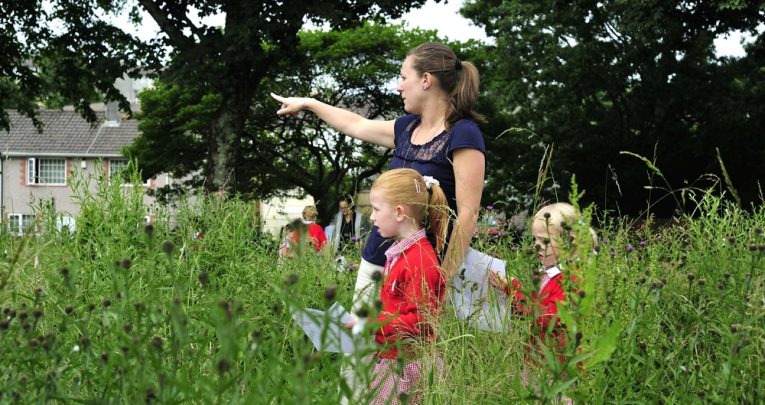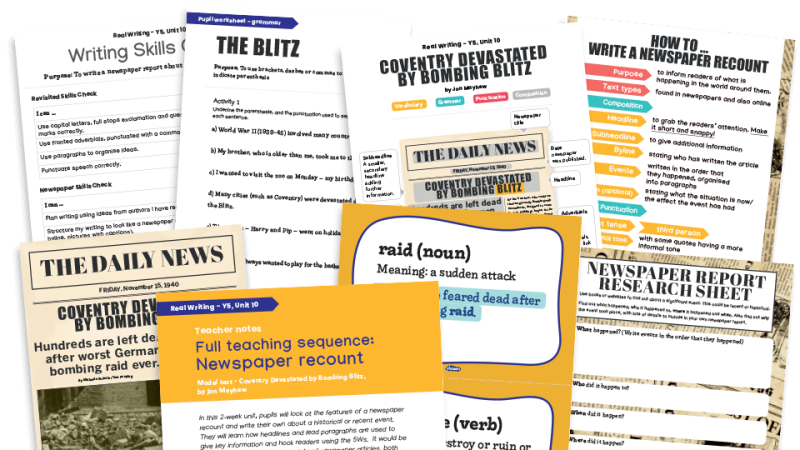The Thin Green Line – Why Outdoor Learning May Have More Positives Than You Think

Teachers needn’t be rooted to the classroom. Branching out into the open will see health, wellbeing and learning bloom, finds Lloyd Burgess…

The French philosopher Michel Foucault once wrote, “Is it surprising that prisons resemble factories, schools, barracks, hospitals; which all in turn resemble prisons?”
In other words, all these institutions are intended to make their inhabitants more easily controlled. And while no one (hopefully) is suggesting the DfE is running some grand Orwellian scheme, it’s not hard to see how confining children within the same four walls all year might stifle learning engagement. Yes, we know the classroom environment has its benefits, and that letting 30 children out that door can feel like opening Pandora’s box. But actually, outdoor learning may have more positives than you think, and while it can be tricky to measure its direct impact on attainment, one new initiative has found that when it comes to that dainty barrier dividing inside and out, the grass is actually greener on the other side. The Natural Connections Demonstration Project, a four-year programme commissioned by Natural England and delivered by Plymouth University, helped more than 40,000 primary and secondary school pupils – particularly those from disadvantaged areas – to experience the benefits of the natural environment by empowering teachers to make the most of their local outdoor surroundings to support everyday learning.
The model for the project was built on substantial research into both the benefits and challenges schools face when embedding outdoor learning into core teaching, and in turn produced strong evidence that learning outdoors has multiple benefits for schoolchildren.
Natural selection
The initial aims of the project were to stimulate the demand for learning outside the classroom and to support schools in delivering it, as well as to increase the supply of high-quality Learning in the Natural Environment (LiNE) services for schools and teachers.
“What we found was a sizeable proportion of the school population doing little or no outdoor learning,” says Natural England’s product lead and principal advisor for outdoor learning programmes, Jim Burt. “In essence, many teachers didn’t have the confidence, skills or the knowledge to take children out into the natural environment. So we designed a programme that worked with schools to address their specific issues.” Understandably, time factors are always an obstacle, so part of working with schools was to show that even those in built-up areas had somewhere nearby that was suitable for outdoor learning. Sue Waite, Associate Professor of Outdoor Learning and Project Lead at Plymouth University, has been researching this area for over 10 years, and explains that the project’s only criteria was that the learning had to take place no more than 10 minutes’ walk from the school. “It’s been mapped that every school has some sort of green space within a 10-minute walking distance,” she says. “So schools that only had a rather barren tarmacked area found it feasible enough to walk to their local park, while others looked at developing and improving green areas within school grounds.” Getting teachers to recognise that learning outside is not an addition to a busy schedule, merely a change in teaching location, has been something that Natural Connections has tried to achieve. For Nicholas Garrick, associate headteacher of a project school and hub leader for Bristol, this change in mindset is key.
“A lot of it was simply looking with teachers at their lesson plans, and saying ‘OK, where could you do that in the real world?’,” he says. “Then sending some teachers, consultants and providers in who can do that with them, and help them experience it in a way they can then go and do it themselves. It’s giving them the confidence and that transferable knowledge.” The idea is getting away from thinking that the classroom is the default, and therefore best, place to learn, and to think of it as just one of many possible learning spaces. “There’s a difference between ‘outdoor learning’ and ‘learning outdoors’,” Nicholas continues. “Outdoor learning implies that it’s something different to indoor learning. So we make it quite clear this isn’t an inside vs outside debate, it’s about taking learning into the best possible place for it to be effective. Asking yourself, ‘Where is the best place to do this learning?’ will point you towards places that you hadn’t thought of before.”
Healthy environment
Sue Waite points out there are multiple benefits to learning outdoors, from increasing children’s awareness of the natural world, to higher levels of physical activity, which in turn leads to better health, feelings of reduced stress and benefits towards mental health and wellbeing. “The evidence between outdoor learning and attainment may be patchy, but there are several pieces of research that suggest a link,” she says. “And the evaluation for this project showed really marked effects on higher levels of engagement and behaviour.” To be precise, feedback from teachers involved found that 92% said pupils were more engaged with learning when outdoors and 85% saw a positive impact on their behaviour. “Research has shown very strongly that the freedom experienced in natural environments makes children better able to manage their own learning,” Sue explains. “It also increases social skills, with far more interaction between peers.” Perhaps fittingly, one of the final benefits of Natural Connections is that now the seeds are planted, it can carry on growing on its own. “One headteacher told me that in the four years his 800-pupil secondary has been involved with Natural Connections, they’ve spent less on the project than they have on the school’s tea and coffee,” says Jim Burt. “That’s key. We really wanted to make sure, as often happens when funding stops, that when the project came to end, the impact didn’t collapse.”
Greener pastures
Go wild with these ideas for taking your lessons outdoors
1. Barking up the wrong tree “We have wild days where we spend the whole day learning outside, and we do this in every season,” says Louise Barrass of Ivy Lane Primary, one of the participating schools. “Activities are done on a rotational basis so that every child gets to try them all. One, for example, was a blindfold exercise where children had to be guided by a partner to a tree, where they would feel its features. Then they would be taken back to their starting point, and without the blindfold try to find which tree was theirs.
‘But a lot of it has also been developing the green space we already have. So we’ve built a pond, and a treehouse where children go for quiet reading and things like that.”
2. Unearthing gems “This year we’ve had three ‘Big Dig’ days promoting learning in the natural environment,” says Helen Williams, mathematician in residence at Marlborough School in Falmouth.
“For the last one, back in July, we celebrated everything we’d done this year with an outdoor Wildlife Party for the whole school. We wanted to make use of our newly appointed school chef, so food became an important focus for the day – pasta was being boiled and there was much chopping taking place. And a group of foragers left, under the direction of a keen and knowledgeable parent, to search for our lunchtime salad.”
3. Really wild show “Our other focus was wildlife, and we secured some visiting creatures, including bats, leaf insects, a corn snake, guinea pigs, chickens and pigeons for children to see, handle and learn about,” Helen continues. “Plus, Kirsty from the Wildlife Trust arrived with her ‘animal homes’ workshop. She brought saws, hammers, workbenches, wood, nails, goggles, first-aid kits, sandpaper and much more. The children were intrigued and excited, and by lunchtime had constructed mini-beast homes and bird boxes that were installed all over the grounds. “There were also activities from music-making to den-making, pavement art and a treasure hunt, as well as an impromptu ‘art’ exhibition where some Y2 boys decided to sit in a trough of water and do some ‘bottom-printing’ on a wall.”












